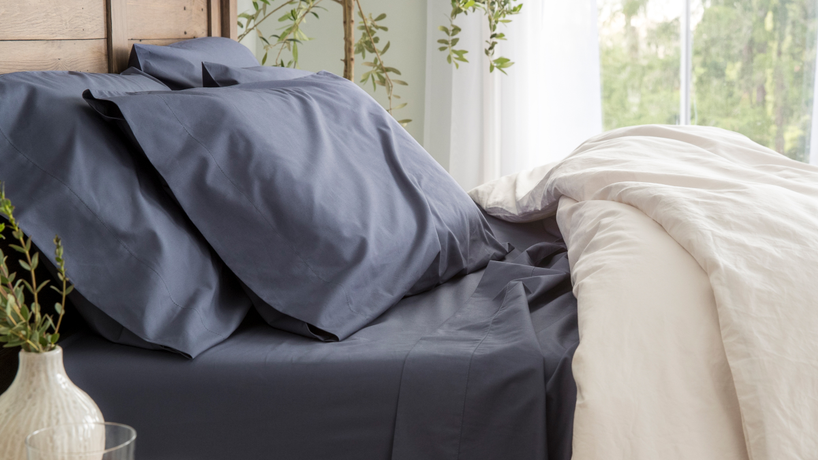
How to Wash a Down Comforter
Josie SivignyCaring for a down duvet can seem like a lot of maintenance if you haven’t owned one before, but with a few simple tips and tricks, keeping your comforter clean is actually pretty easy.
Before you chuck your expensive down duvet into the washer and dryer, check the care instructions on the tag. Some duvets require dry cleaning, but feather duvets can often be washed as long as you pay attention and don’t let them stay wet too long. If you live in a more humid environment, you may want to consider taking your duvet to the dry cleaner to avoid mildew.
1. Use a duvet cover to cut down on dirt.
Keeping your down duvet insert inside of a cover can prevent most of the everyday wear and tear that your sheets, blankets, and pillows collect overnight. You should wash your duvet cover pretty frequently, about as often as you wash your sheets, but you can stretch out time between washing your insert to once every three to four months, especially if you spot clean.
2. Make sure your washing machine can handle your duvet.
Down duvets, especially queen and king size, can get pretty heavy once they’re waterlogged. Make sure your washing machine is big enough to handle your duvet by checking that it can move freely around the drum. This might be tough in a front loading washer and easier in a top loader. Even if it’s a little snug, as long as it isn’t packed into the drum you should be able to get enough water flow to effectively clean the duvet.
3. Crank up that spin cycle.
It might get a little noisy, but getting as much moisture out of your duvet as possible before starting a drying cycle is important. The down feathers will absorb a lot of water, and you don’t want to run your dryer all day long. If your duvet is still dripping wet after one cycle, let it run for another spin before transferring it to the dryer.
4. Run that dryer longer than you think you need to.
Down comforters are filled with just that—down feathers. Once they get wet, if they retain any moisture they’ll carry a scent that can lovingly be compared to a wet dog. This means the drying process is extra important. Running your duvet through the dryer until you’re absolutely sure there aren’t anymore wet spots can make sure you won’t start to smell your duvet after a few nights. You can use dryer balls or tennis balls to help make sure you get the comforter completely dry.
5. If you notice a mildewy smell, there’s still hope.
Don’t panic—sometimes this can happen if your duvet didn’t get 100% dry before you took it out of the dryer. If you notice a damp or mildew-like smell after leaving it out for a few days, you can still salvage your duvet. There are a few methods you can try.
White vinegar
Running your duvet through a wash cycle with about a cup of white vinegar can help kill the mildew smell, but you’ll have to run an additional cycle with your detergent after to get rid of the vinegar smell. This is a little time intensive but as long as you ensure your duvet is absolutely dry before putting it back in your cover and on your bed, you shouldn’t have to worry about the smell any longer.
Bleach
Sometimes white vinegar isn’t strong enough and you need a heavier hitter. Add a splash of bleach to the cycle and make sure to do an extra rinse and spin so the bleach scent doesn’t linger and you should be good to go.



